DFB
Well-known member
- Aug 12, 2019
- 4,600
- 2,372
So, you have cleaned your tires and selected a dressing, sealant or coating. Now, its time apply said product, but with what?
Different tire products work best with different application methods. Most people would associate tire dressings with some sort of foam applicator, and for the most part, that is a correct assumption. But, like everything detailing, there is so much to choose from.

Tip – this is probably an obvious suggestion for those on this forum, but never apply dressing directly to the tire, unless you want to re-clean your wheels afterwards. Apply the product directly into the applicator or brush and then work it into the tire, reapplying more as needed. This applies to all dressings, sealants and coatings……….except for aerosol products.
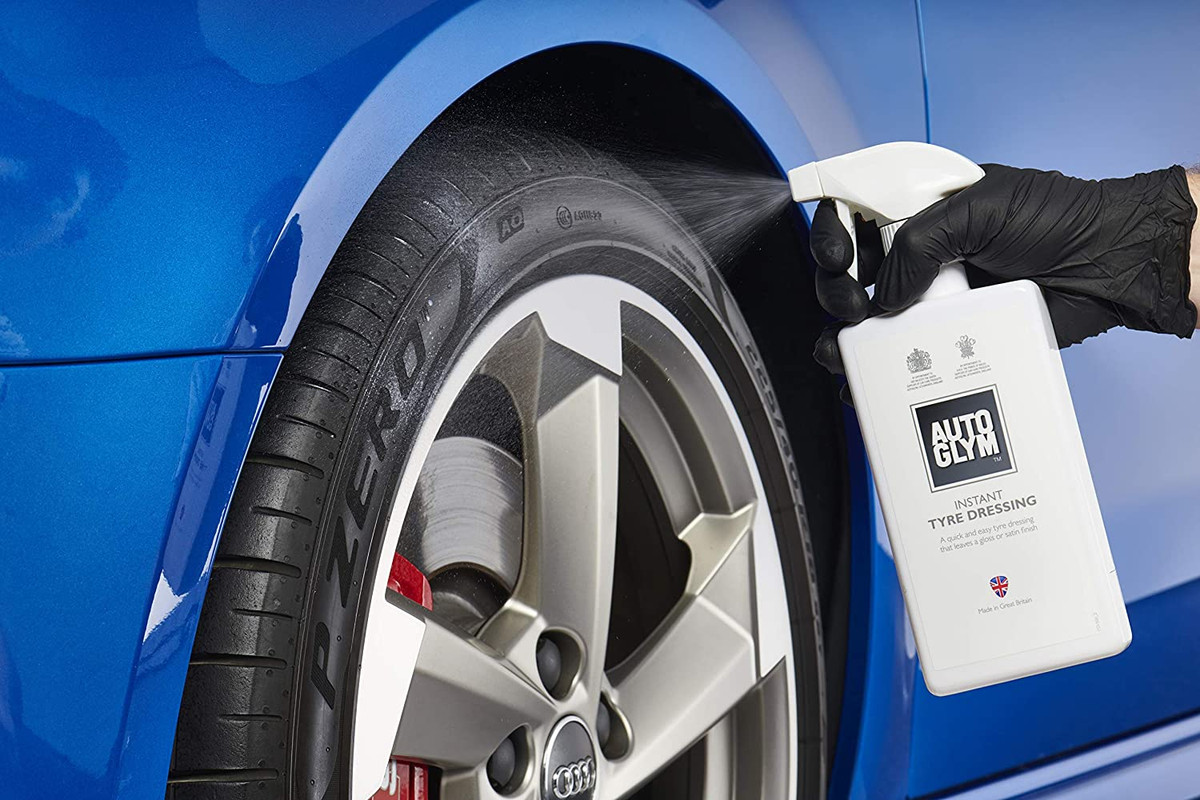
Foam Applicators -
These are the most popular, most widely available and offer the most variation or choice. Foam applicators are ideal for thicker gel or crème like dressings and sealants but will also work with runnier products too.
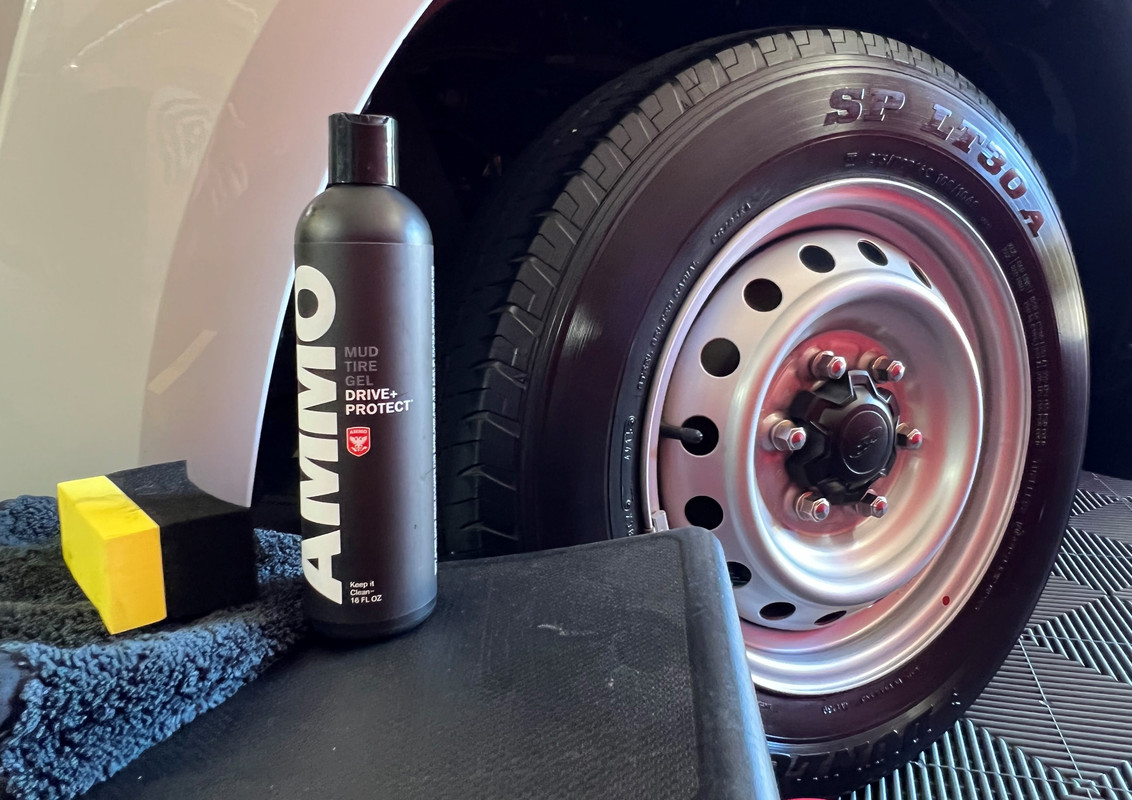
A very basic and cost-effective choice would be to use scraps of offcut foam. These can be had from a local rubber and foam supplier, often sold in discount bins for a couple of dollars each. Simply cut them into suitable sizes and your set. When they get too dirty, throw it away and grab another. The only downside to this option is the lack of a separator/hand grip, which means you end up with dressing all over your hands/gloves.
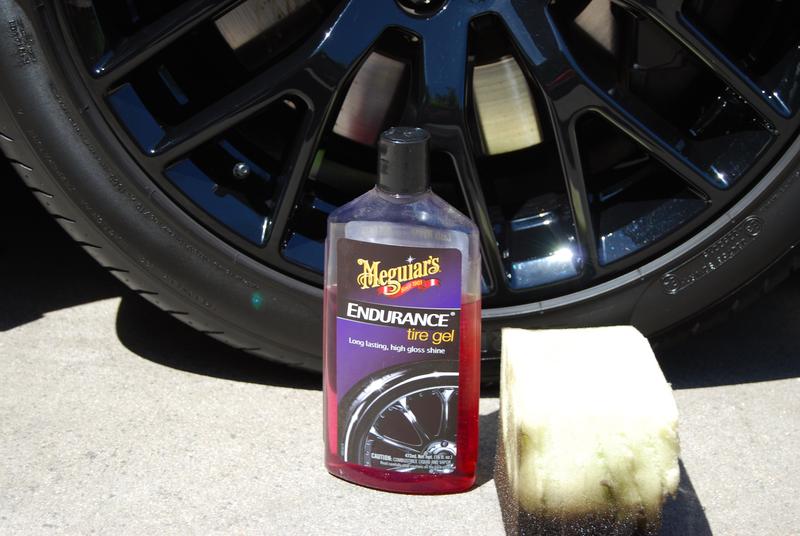
Dedicated foam applicators come in many different shapes and sizes………….and some are better than others. I cannot begin to cover each and every foam applicator on the market, so here a few favorites.
Firstly, the generic curved foam applicators that are sold at most detailing suppliers. These are inexpensive and very functional, a good choice for lower profile tires. The generous (colored) handgrip works well to keep your fingers clean. Often sold in multi-packs.

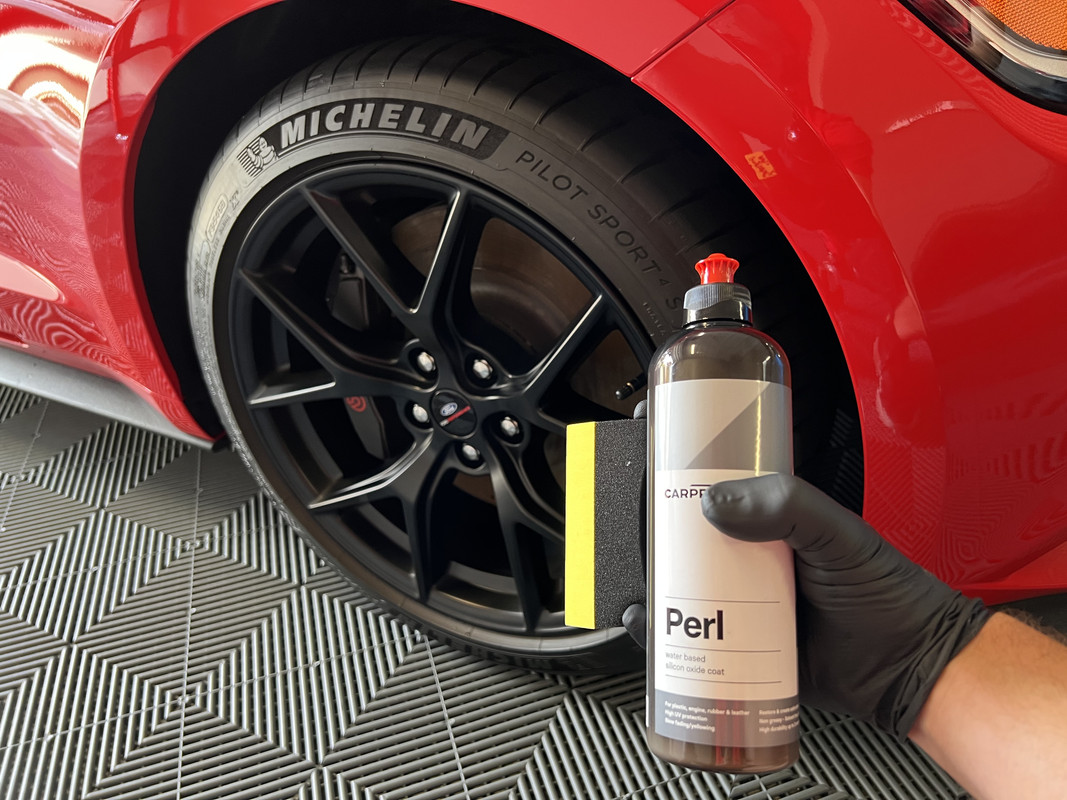
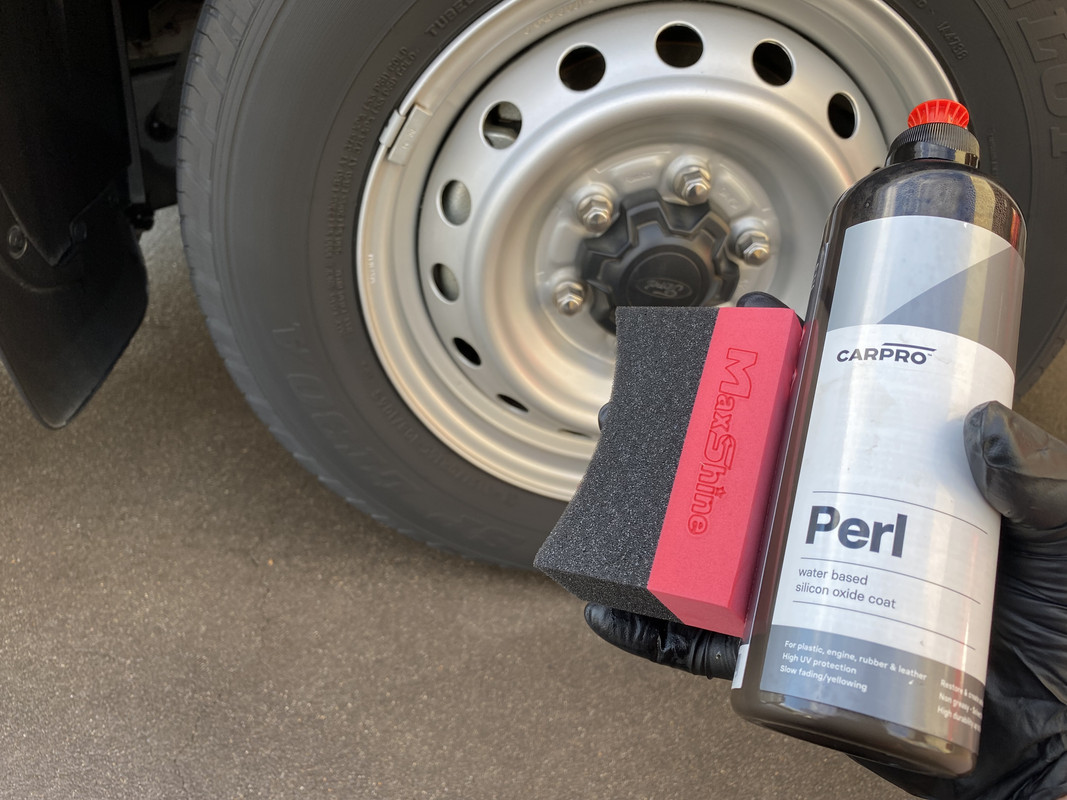
These chunkier square applicators are one of my favorites, and while they look best suited to larger tires, they function well on low profiles as well. These items are sold under several different brands and likely all come out of the same factory in China. Chemical Guys, Maxshine, Bowden’s and more sell something similar, differentiated by the colour of the hand grip. Very durable too.
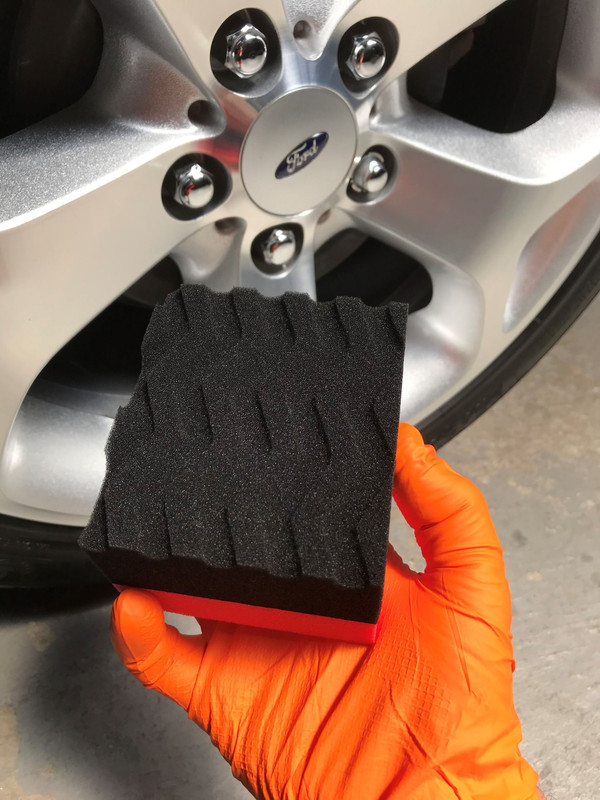
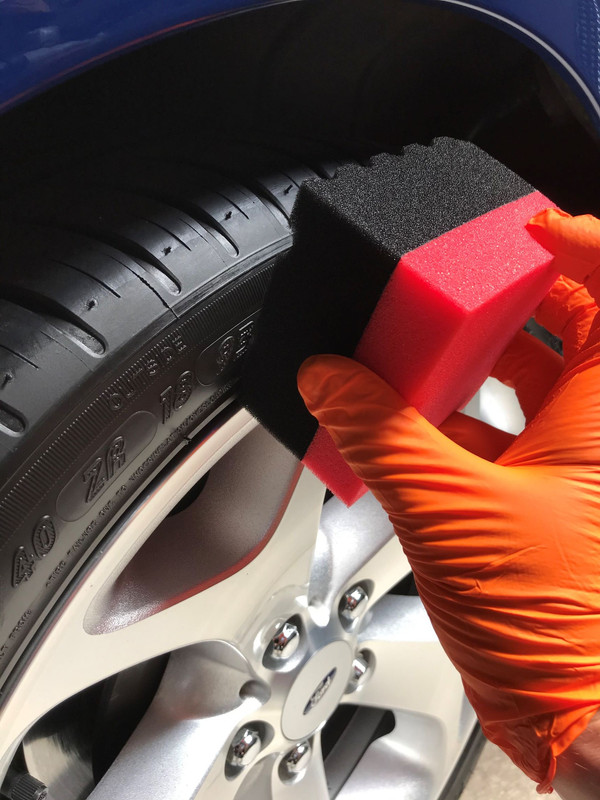
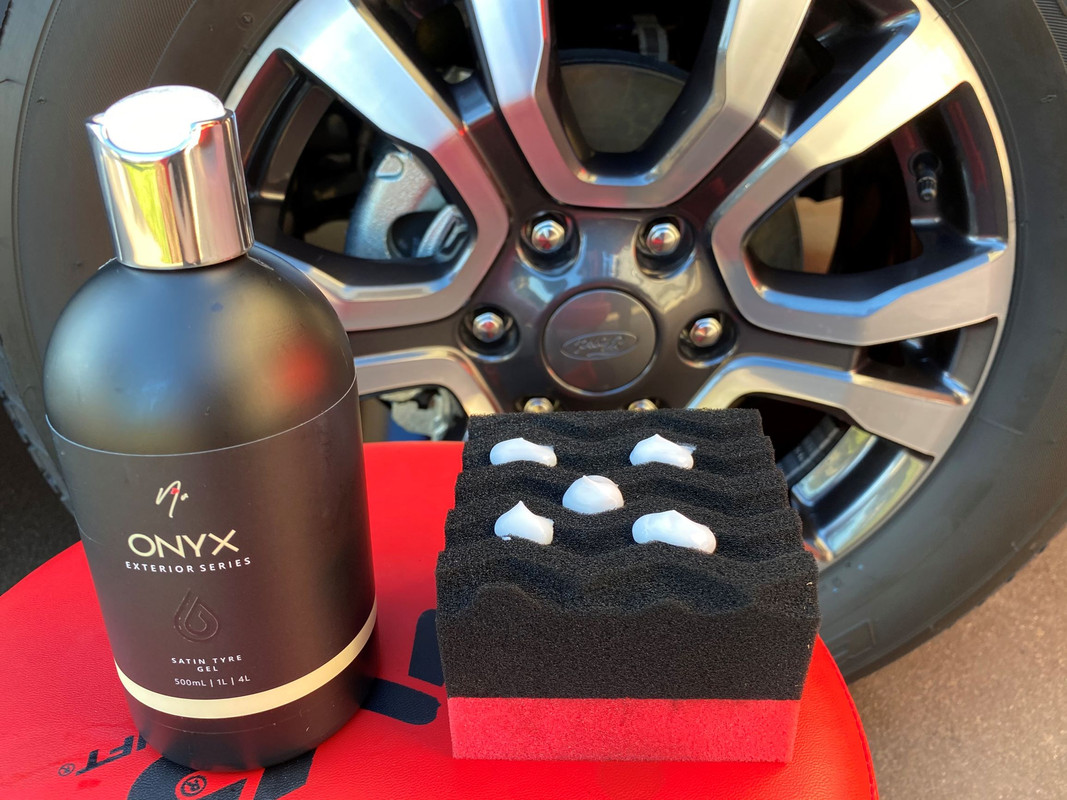
“Hex Grip” foam pucks are brilliant for tire dressing. These come in a few different styles, but all function the same. These provide a very defined hand grip for mess-free applications. Again, sold by several different brands and suppliers.
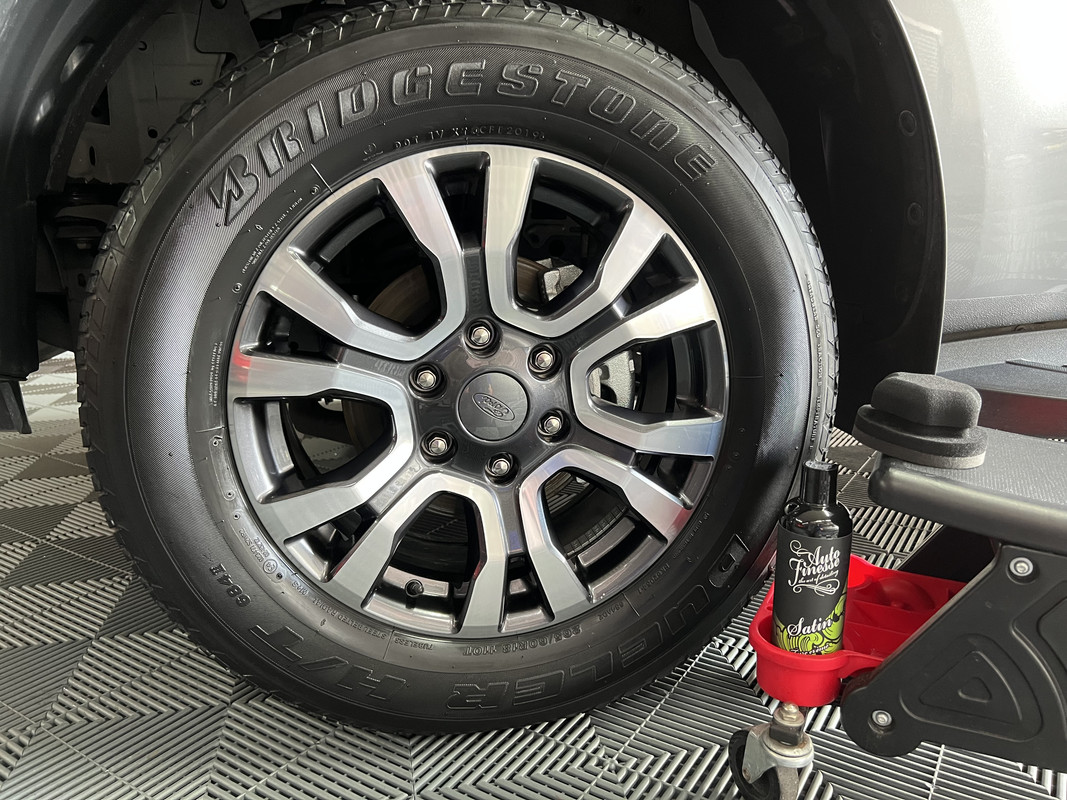
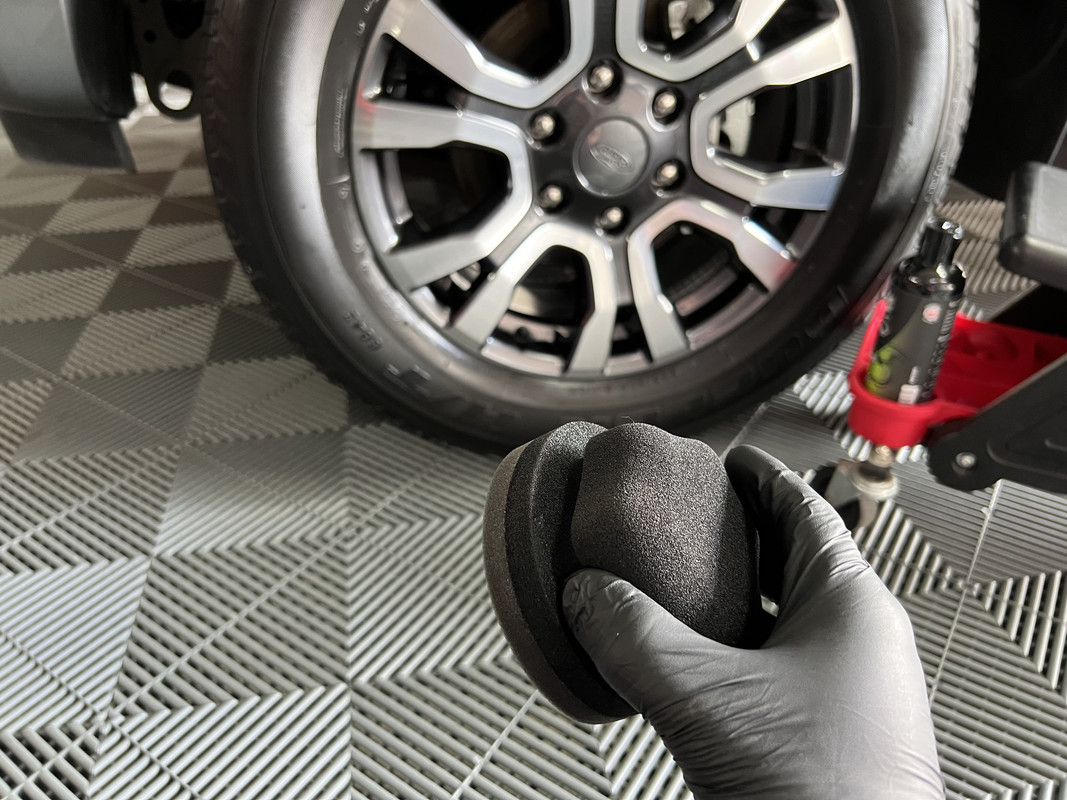
Ones to avoid – the Gyeon applicators are pretty average, and I’m also not a fan of using the round wax applicators, they are so messy to use. And this might come across as odd considering I place a priority on keeping the dressing off my hands, but I don’t care for the foam applicators with the plastic hand grip.

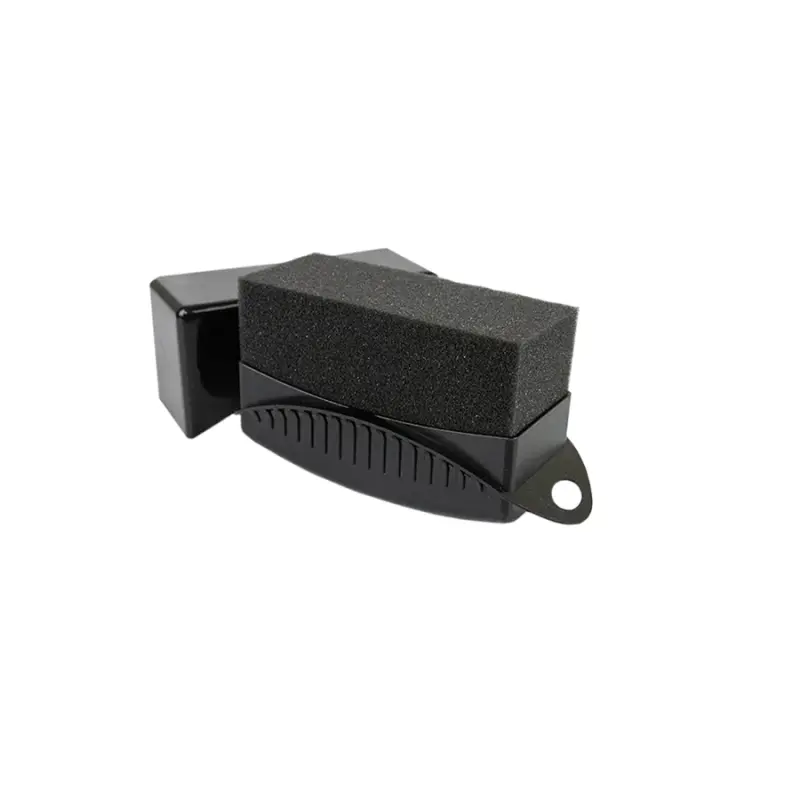
Microfiber -
I don’t use these personally, not sure why though. Cost wise, these can actually be cheaper than foam for some reason. The caveat here is no separator/hand grip to avoid those sticky fingers, so I guess that’s why I don’t use them.
The Rag Company sell black, terry weave applicator sponges with tire dressing in mind. However, I have found them to lack structural integrity compared to a good foam applicator.
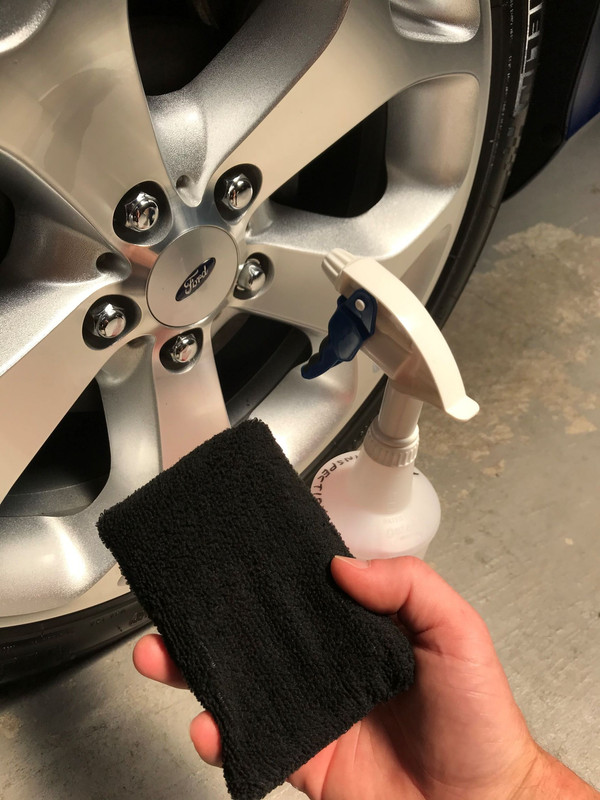
Brushes -
Brushes are best suited to runnier liquids such as diluted Perl or Adams Graphene. I have a feeling I learnt about using brushes for applying tire dressing from Obsessed Garage. Initially, I couldn’t find a suitable brush for this task, as in one large enough to be effective.
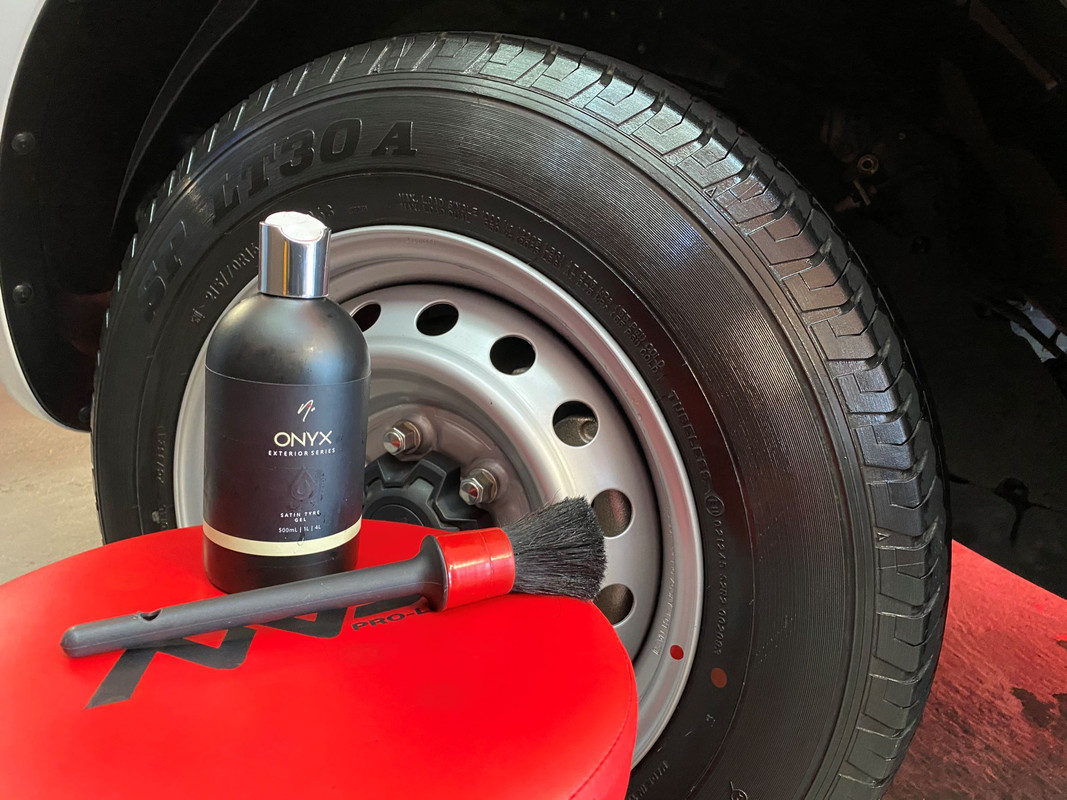
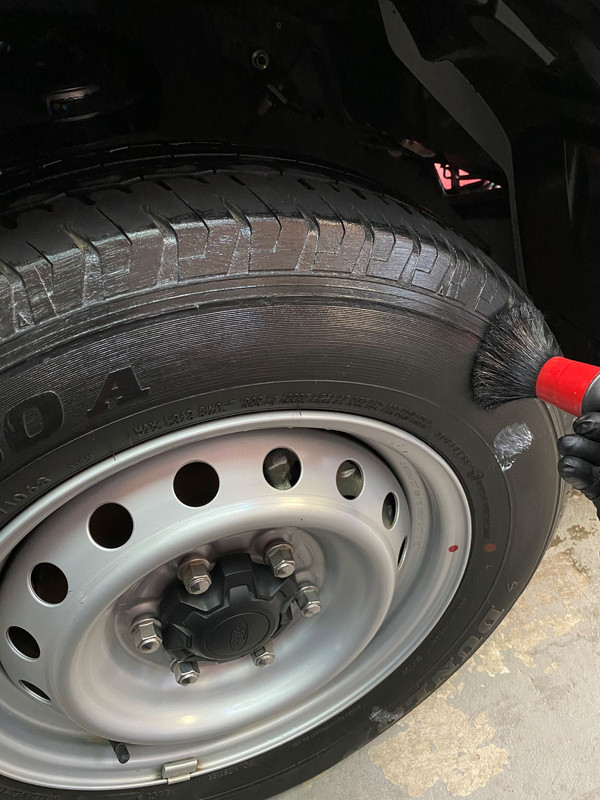
Ideally, you want a brush with a lot of surface area to be efficient and I didn’t find one suitable until I bit the bullet and imported some RaceGlaze XL’s from Obsessed Garage. This brush is huge, almost too big for cleaning lug nuts, but ideal for applying dressings. You could also look at a large "chalk brush" for a similar effect.
To use, spray the dressing into the bristles are work it into the sidewall.
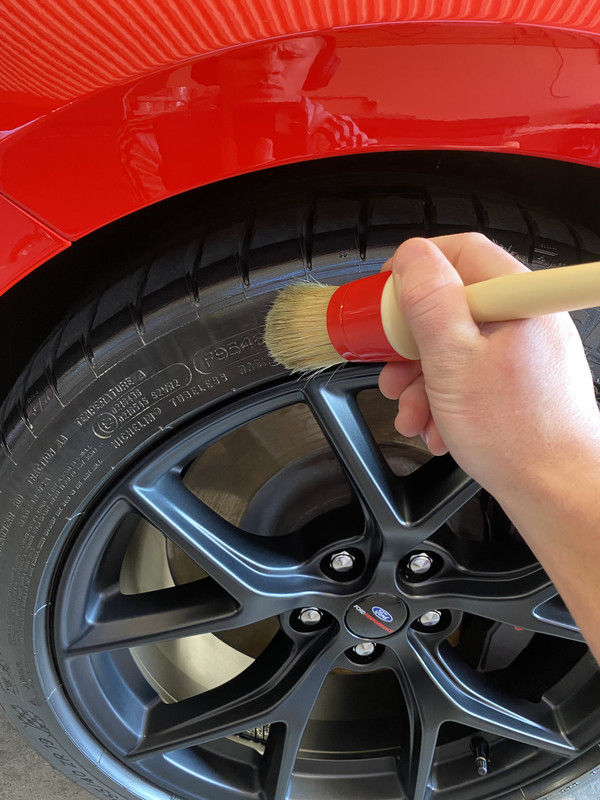
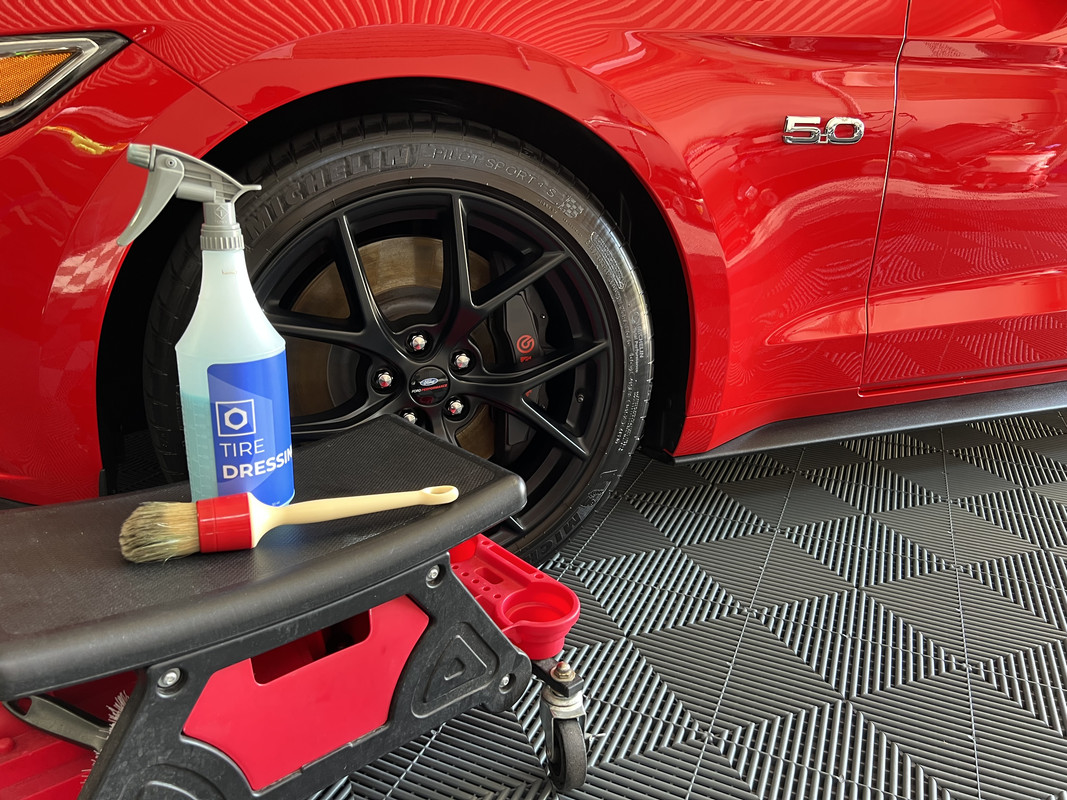

A flag tipped wheel and body brush is brilliant for applying runny dressings to larger SUV and truck tires. Spray the dressing directly into the bristles and start working it across the sidewall. This method is supremely fast and efficient on large, knobbly tyres. I learnt this trick, including many others, from the members of this very forum.
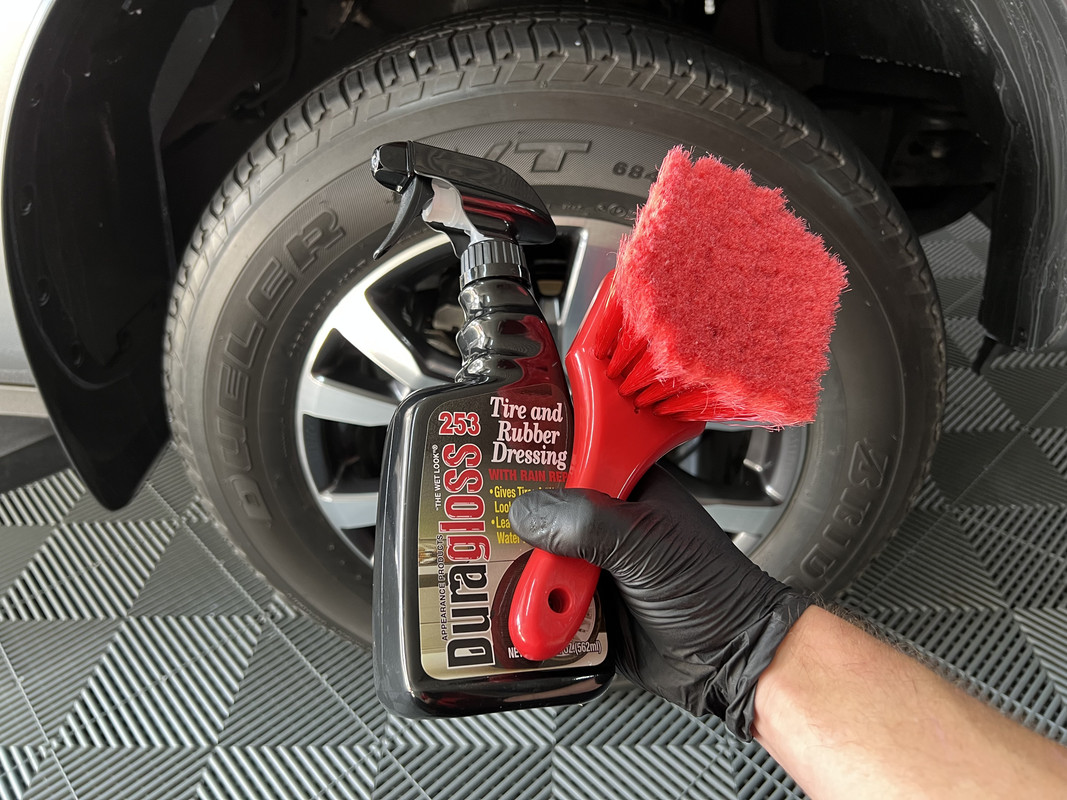
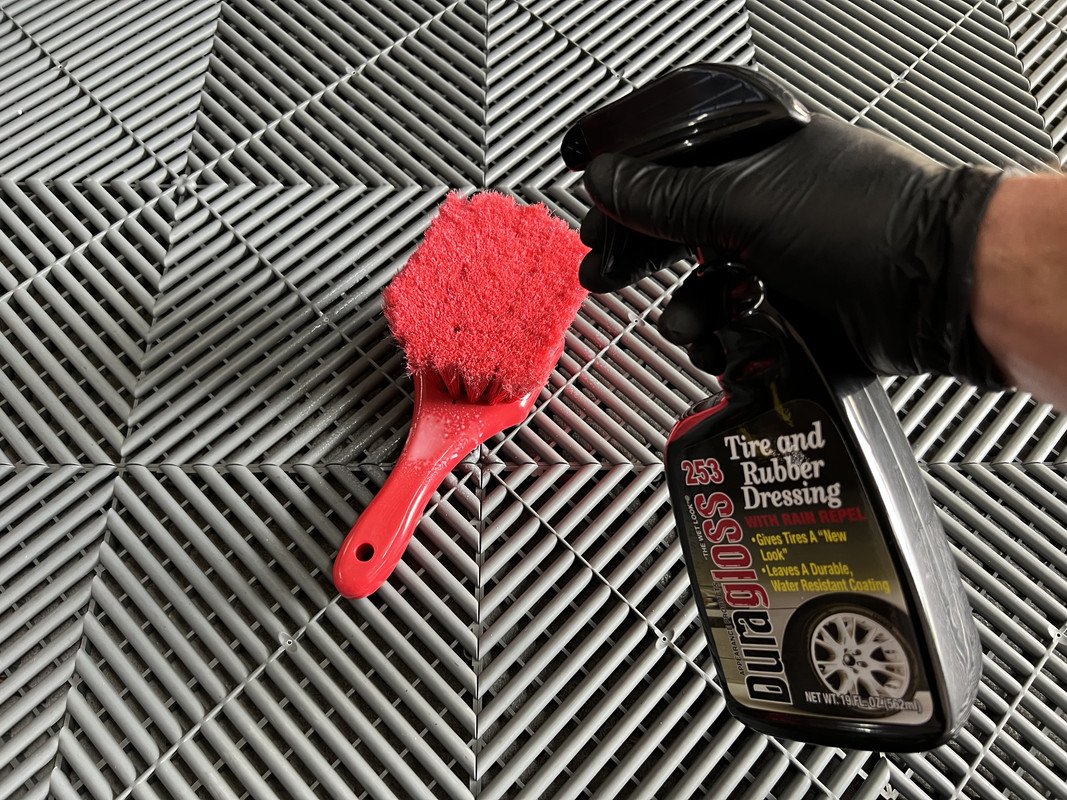
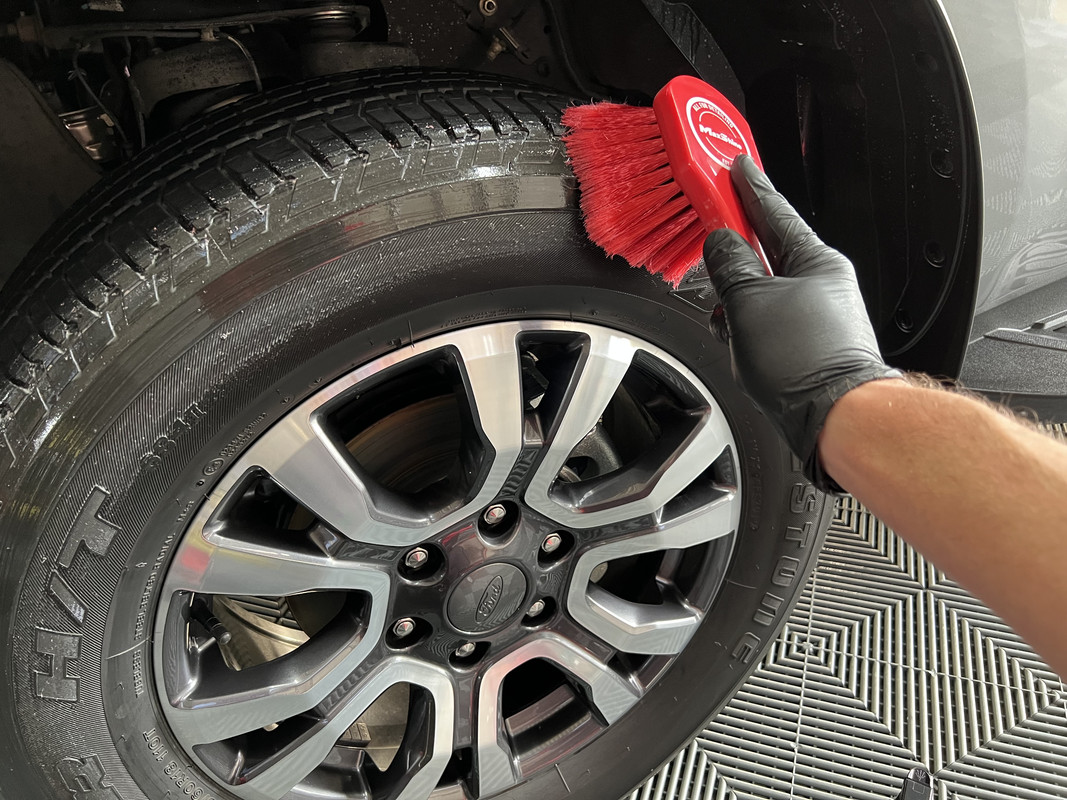
The TRC Ultra Utility Brush is very good for this too -
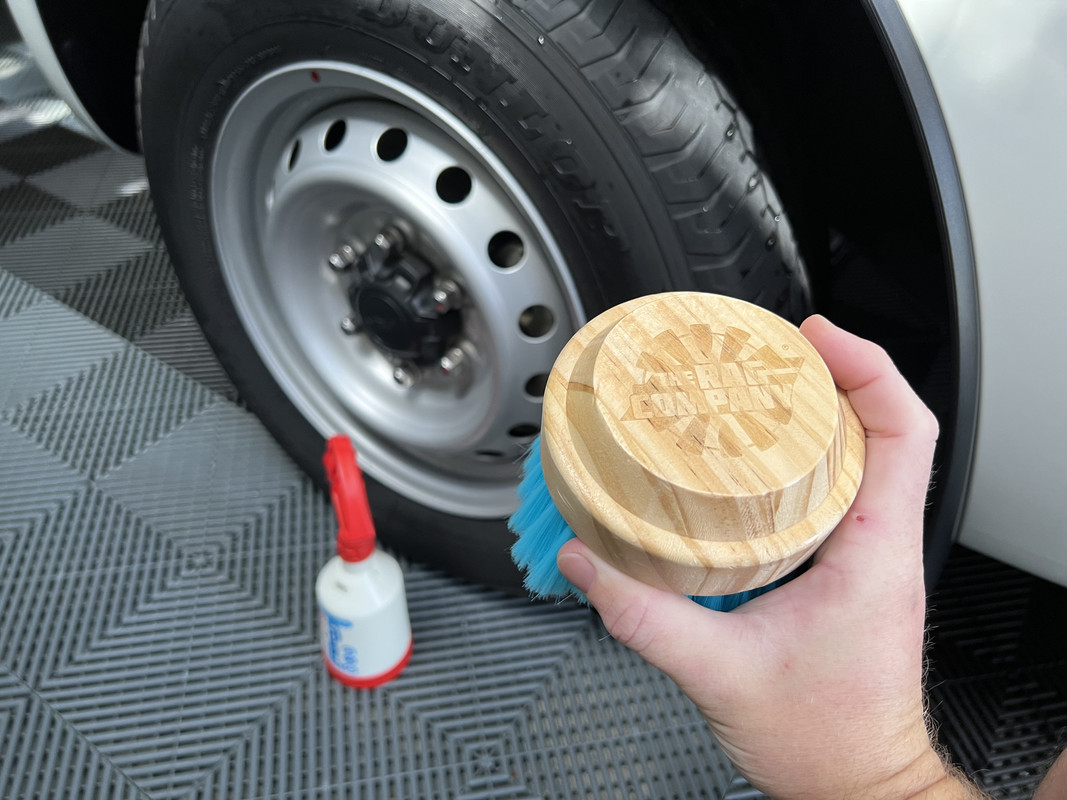
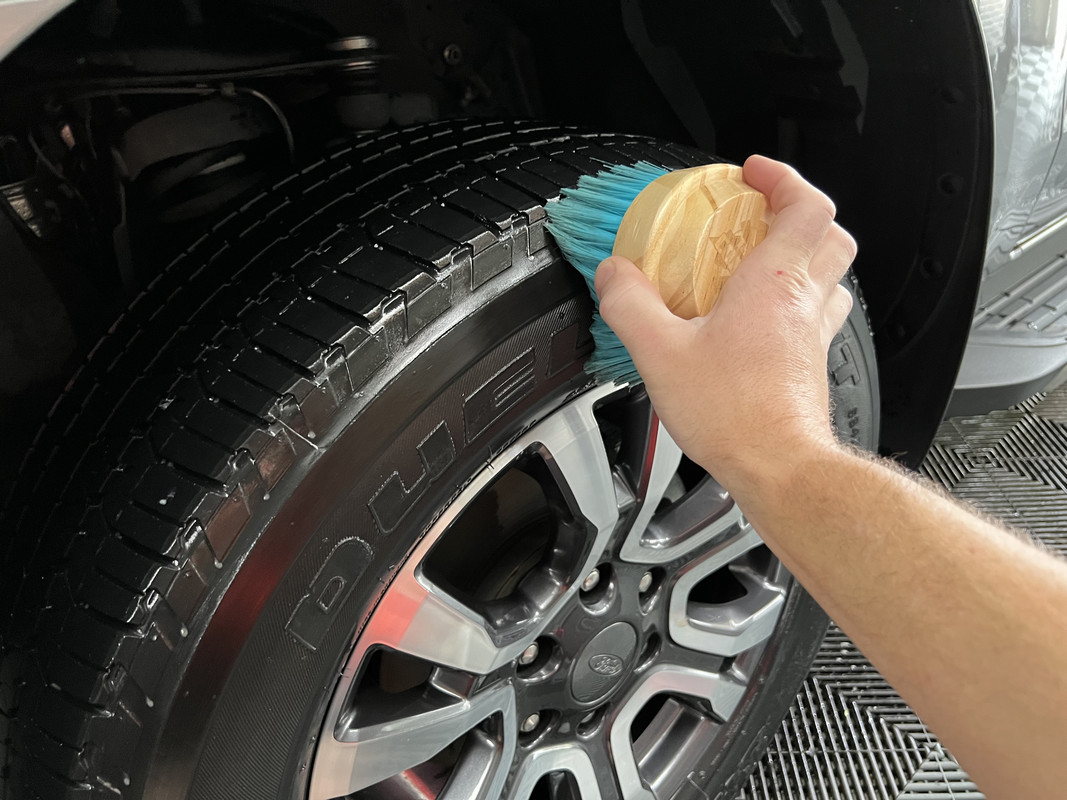
A trend of late has been the re-purposed use of cosmetic brushes. The detailing companies won’t say this, but some are simply rebranded cosmetic brushes. Some are more dedicated –
The Detail Factory Curveball brush was primarily designed for interior and exterior cleaning but has also been successfully used for applying tire dressings. The bristles are ultra soft and work surprisingly well. Again, you would probably stick to runnier dressings. The only thing that counts against it is the price. This brush is just too expensive, and too nice, to be sacrificing it to this role. You can actually get Chinese knockoffs through Amazon and Ebay for up to half the price, although how you feel about intellectual theft of this type is going to be a personal thing.

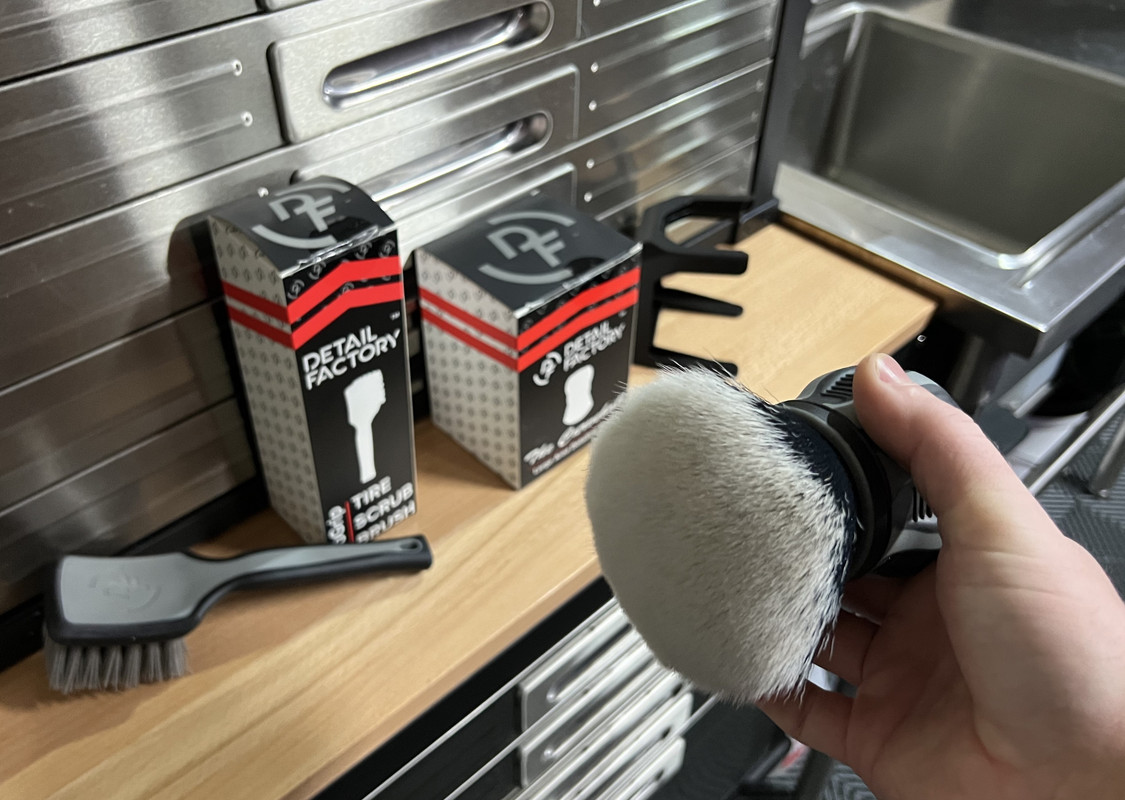
These next two are most certainly repurposed cosmetic brushes, and they work brilliantly too. The extremely soft and dense bristles are stunningly effective.
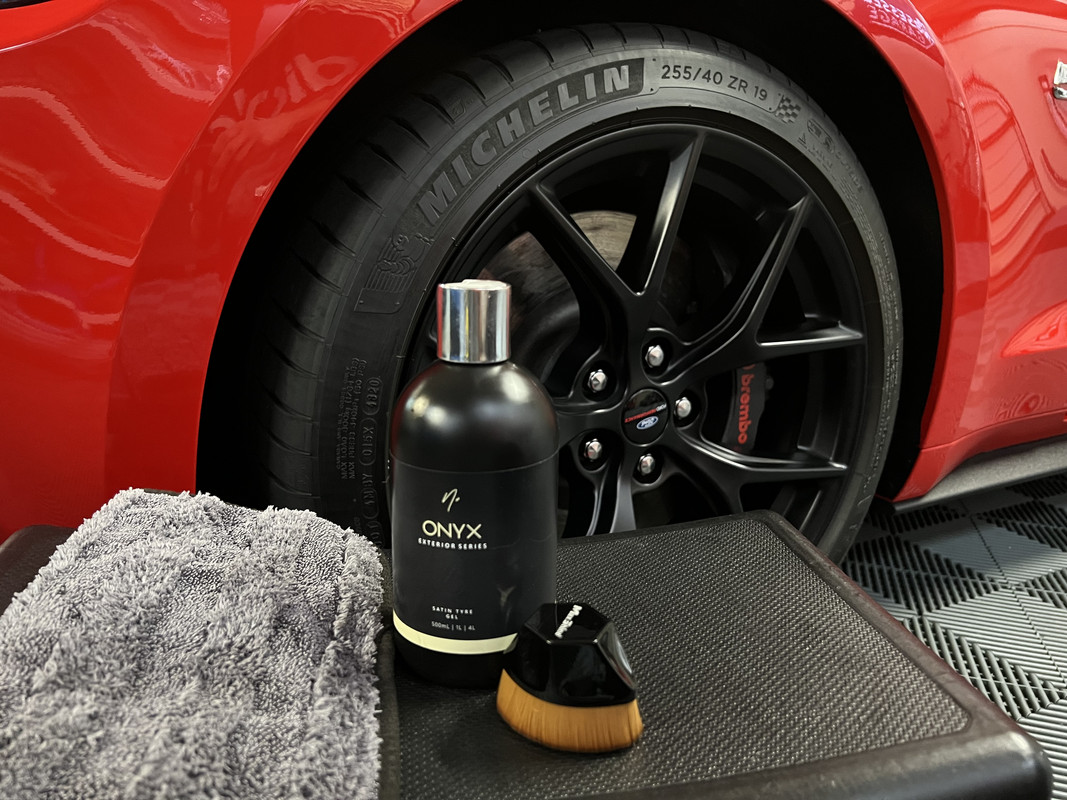
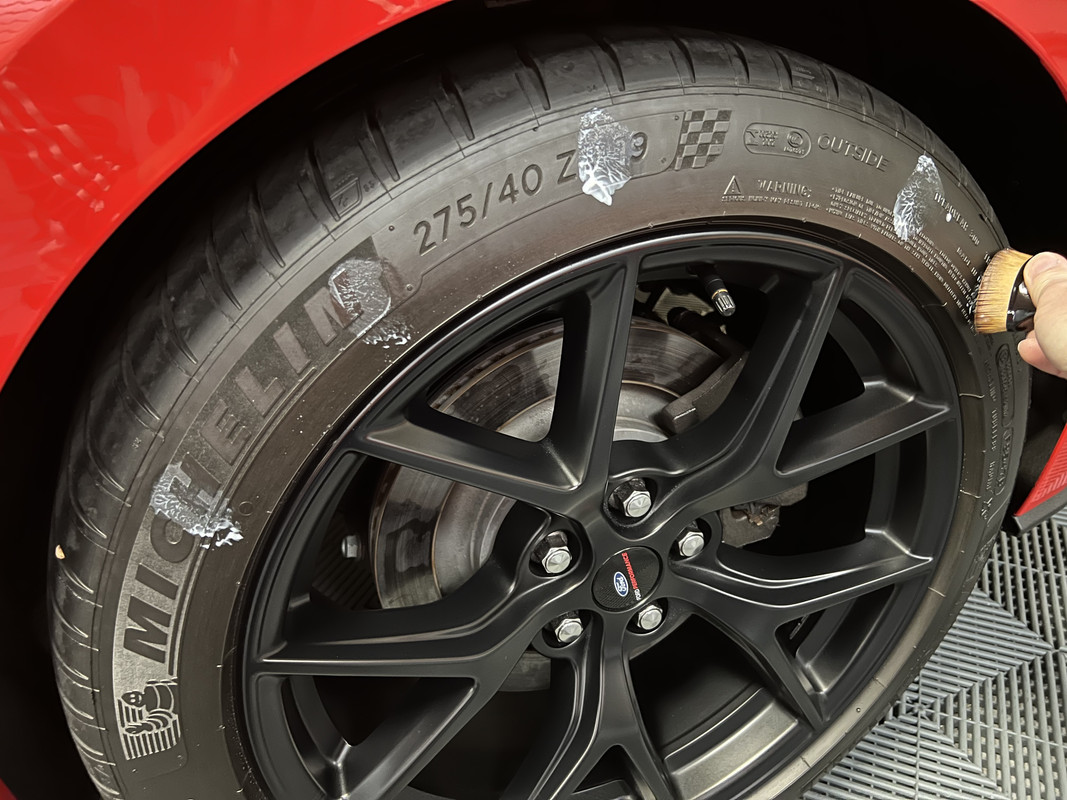

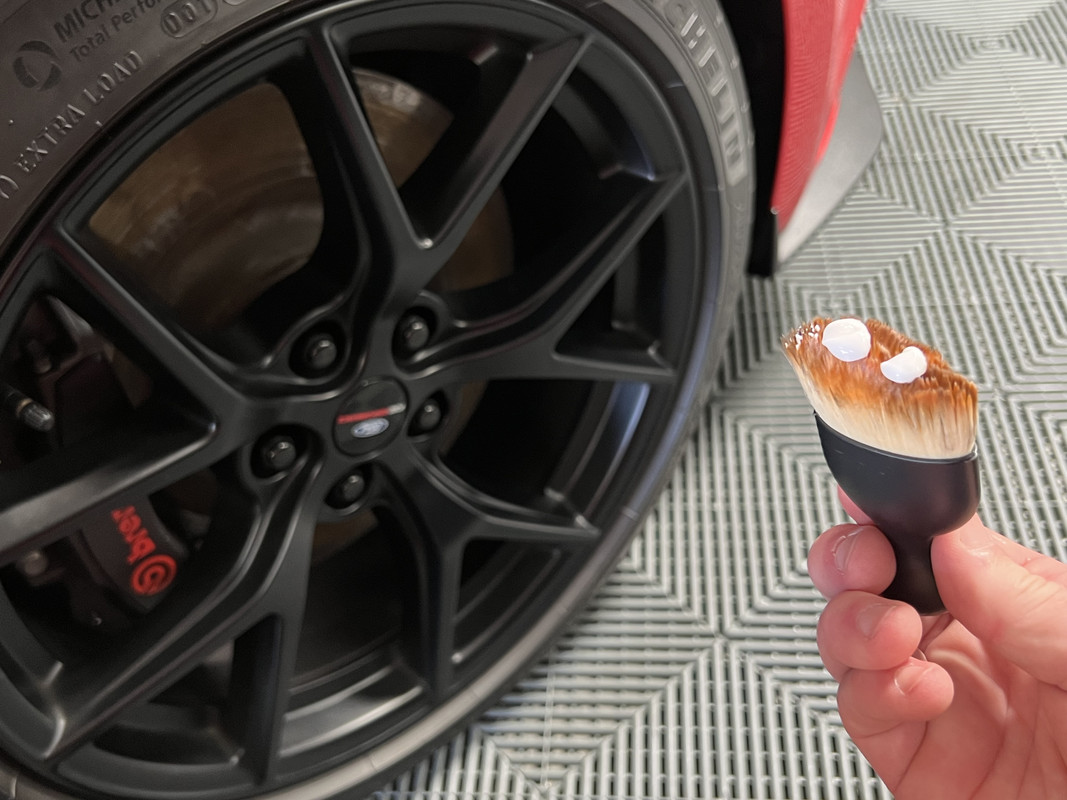
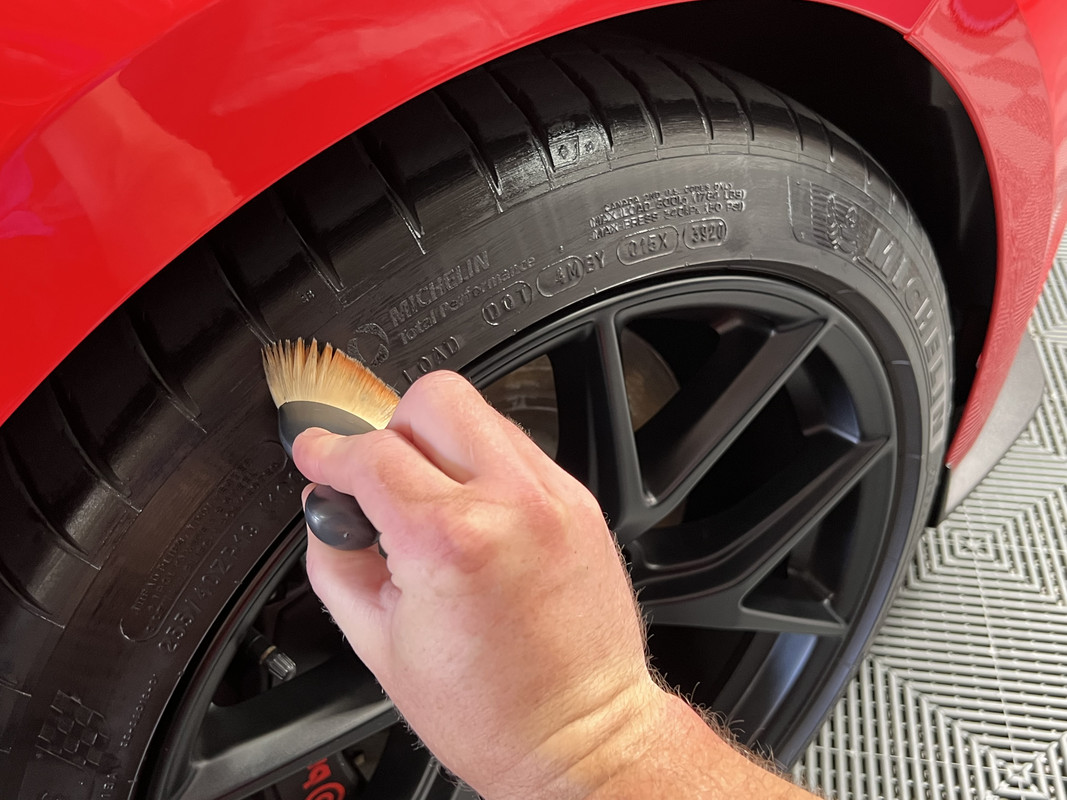
Ones to avoid – smaller boar’s hair brushes will work, but will be more time consuming………….ask me how I know this! And I would also say that if you intend on using a paint brush, be sure to wrap the metal bristle holder in electrical tape to safeguard against scraping your wheels or bodywork.
Conclusions -
Tire dressing applicators are probably one of the more personal choices when it comes to detailing tools. At the end of the day, its all about what feels comfortable to use and what best suits the sort of tires you have. Any of the above will do the job and do it well.
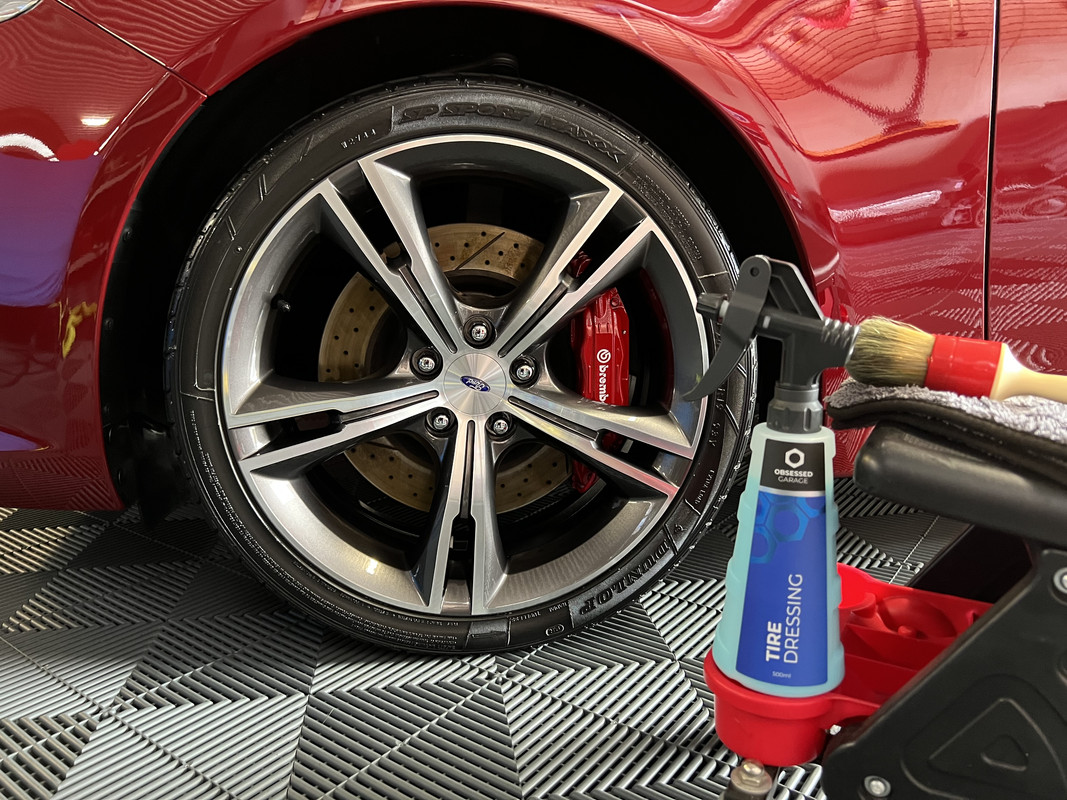
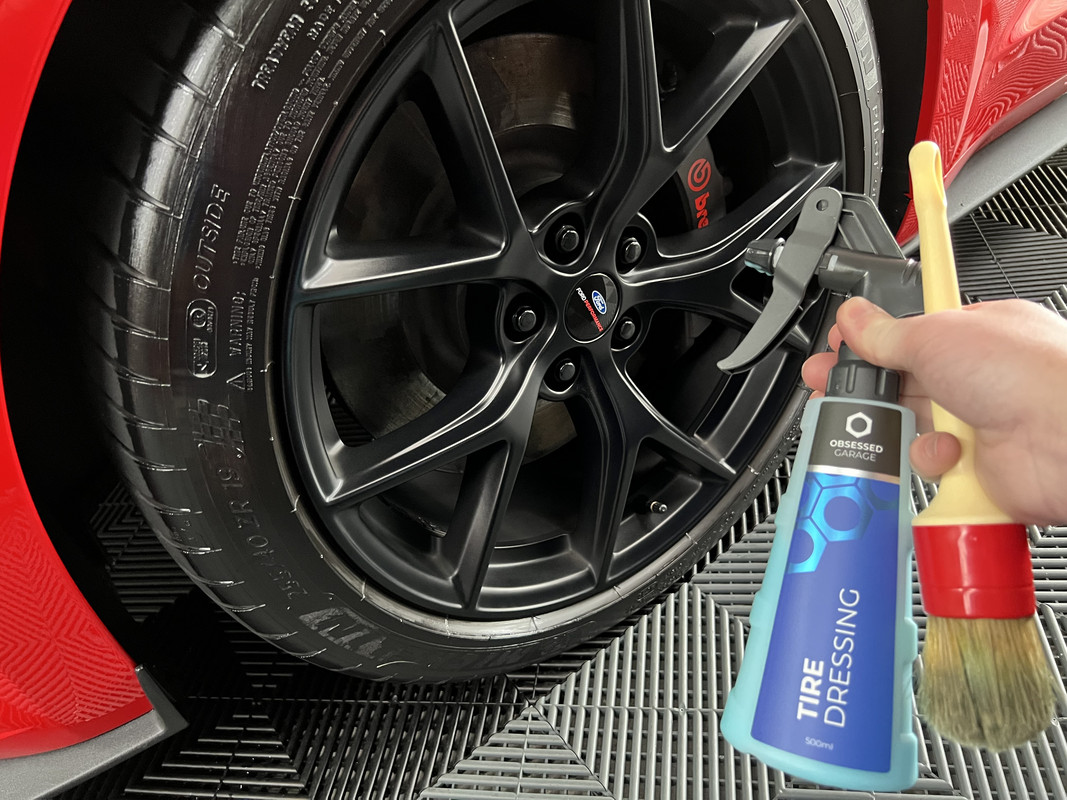
Note - once again, this piece was written for threads elsewhere, so the links to the products and prices have been removed. Again, I hope this still provided sufficient information. Feel free to PM me for links if you want.
This concludes the three part series on tires. Having written over 8,000 words on tire cleaning and dressing over the last week or so, the most challenging part was editing my copy to suit the website it was going to be published on. Why does that matter? Well, in Australia we spell the subject in question "Tyre" as opposed to the US spelling of "Tire". To me, "tire" means to become "tired" or "exhausted". But, being a perfectionist and in the interests of being thorough, I made sure to go through and change all the "tyres" to "tires" for the US-based websites. For most that doesn't matter, but you would be surprised the amount of people who get their nose out of joint with spelling, correct use of words or grammatical errors................even if they understood what was being said. I even had someone a couple of weeks ago take the time to write me a PM about sentence structure, and not in a helpful way either.
Thanks for reading! :xyxthumbs:
Different tire products work best with different application methods. Most people would associate tire dressings with some sort of foam applicator, and for the most part, that is a correct assumption. But, like everything detailing, there is so much to choose from.

Tip – this is probably an obvious suggestion for those on this forum, but never apply dressing directly to the tire, unless you want to re-clean your wheels afterwards. Apply the product directly into the applicator or brush and then work it into the tire, reapplying more as needed. This applies to all dressings, sealants and coatings……….except for aerosol products.

Foam Applicators -
These are the most popular, most widely available and offer the most variation or choice. Foam applicators are ideal for thicker gel or crème like dressings and sealants but will also work with runnier products too.

A very basic and cost-effective choice would be to use scraps of offcut foam. These can be had from a local rubber and foam supplier, often sold in discount bins for a couple of dollars each. Simply cut them into suitable sizes and your set. When they get too dirty, throw it away and grab another. The only downside to this option is the lack of a separator/hand grip, which means you end up with dressing all over your hands/gloves.

Dedicated foam applicators come in many different shapes and sizes………….and some are better than others. I cannot begin to cover each and every foam applicator on the market, so here a few favorites.
Firstly, the generic curved foam applicators that are sold at most detailing suppliers. These are inexpensive and very functional, a good choice for lower profile tires. The generous (colored) handgrip works well to keep your fingers clean. Often sold in multi-packs.



These chunkier square applicators are one of my favorites, and while they look best suited to larger tires, they function well on low profiles as well. These items are sold under several different brands and likely all come out of the same factory in China. Chemical Guys, Maxshine, Bowden’s and more sell something similar, differentiated by the colour of the hand grip. Very durable too.



“Hex Grip” foam pucks are brilliant for tire dressing. These come in a few different styles, but all function the same. These provide a very defined hand grip for mess-free applications. Again, sold by several different brands and suppliers.


Ones to avoid – the Gyeon applicators are pretty average, and I’m also not a fan of using the round wax applicators, they are so messy to use. And this might come across as odd considering I place a priority on keeping the dressing off my hands, but I don’t care for the foam applicators with the plastic hand grip.


Microfiber -
I don’t use these personally, not sure why though. Cost wise, these can actually be cheaper than foam for some reason. The caveat here is no separator/hand grip to avoid those sticky fingers, so I guess that’s why I don’t use them.
The Rag Company sell black, terry weave applicator sponges with tire dressing in mind. However, I have found them to lack structural integrity compared to a good foam applicator.

Brushes -
Brushes are best suited to runnier liquids such as diluted Perl or Adams Graphene. I have a feeling I learnt about using brushes for applying tire dressing from Obsessed Garage. Initially, I couldn’t find a suitable brush for this task, as in one large enough to be effective.


Ideally, you want a brush with a lot of surface area to be efficient and I didn’t find one suitable until I bit the bullet and imported some RaceGlaze XL’s from Obsessed Garage. This brush is huge, almost too big for cleaning lug nuts, but ideal for applying dressings. You could also look at a large "chalk brush" for a similar effect.
To use, spray the dressing into the bristles are work it into the sidewall.



A flag tipped wheel and body brush is brilliant for applying runny dressings to larger SUV and truck tires. Spray the dressing directly into the bristles and start working it across the sidewall. This method is supremely fast and efficient on large, knobbly tyres. I learnt this trick, including many others, from the members of this very forum.



The TRC Ultra Utility Brush is very good for this too -


A trend of late has been the re-purposed use of cosmetic brushes. The detailing companies won’t say this, but some are simply rebranded cosmetic brushes. Some are more dedicated –
The Detail Factory Curveball brush was primarily designed for interior and exterior cleaning but has also been successfully used for applying tire dressings. The bristles are ultra soft and work surprisingly well. Again, you would probably stick to runnier dressings. The only thing that counts against it is the price. This brush is just too expensive, and too nice, to be sacrificing it to this role. You can actually get Chinese knockoffs through Amazon and Ebay for up to half the price, although how you feel about intellectual theft of this type is going to be a personal thing.


These next two are most certainly repurposed cosmetic brushes, and they work brilliantly too. The extremely soft and dense bristles are stunningly effective.





Ones to avoid – smaller boar’s hair brushes will work, but will be more time consuming………….ask me how I know this! And I would also say that if you intend on using a paint brush, be sure to wrap the metal bristle holder in electrical tape to safeguard against scraping your wheels or bodywork.
Conclusions -
Tire dressing applicators are probably one of the more personal choices when it comes to detailing tools. At the end of the day, its all about what feels comfortable to use and what best suits the sort of tires you have. Any of the above will do the job and do it well.


Note - once again, this piece was written for threads elsewhere, so the links to the products and prices have been removed. Again, I hope this still provided sufficient information. Feel free to PM me for links if you want.
This concludes the three part series on tires. Having written over 8,000 words on tire cleaning and dressing over the last week or so, the most challenging part was editing my copy to suit the website it was going to be published on. Why does that matter? Well, in Australia we spell the subject in question "Tyre" as opposed to the US spelling of "Tire". To me, "tire" means to become "tired" or "exhausted". But, being a perfectionist and in the interests of being thorough, I made sure to go through and change all the "tyres" to "tires" for the US-based websites. For most that doesn't matter, but you would be surprised the amount of people who get their nose out of joint with spelling, correct use of words or grammatical errors................even if they understood what was being said. I even had someone a couple of weeks ago take the time to write me a PM about sentence structure, and not in a helpful way either.
Thanks for reading! :xyxthumbs: